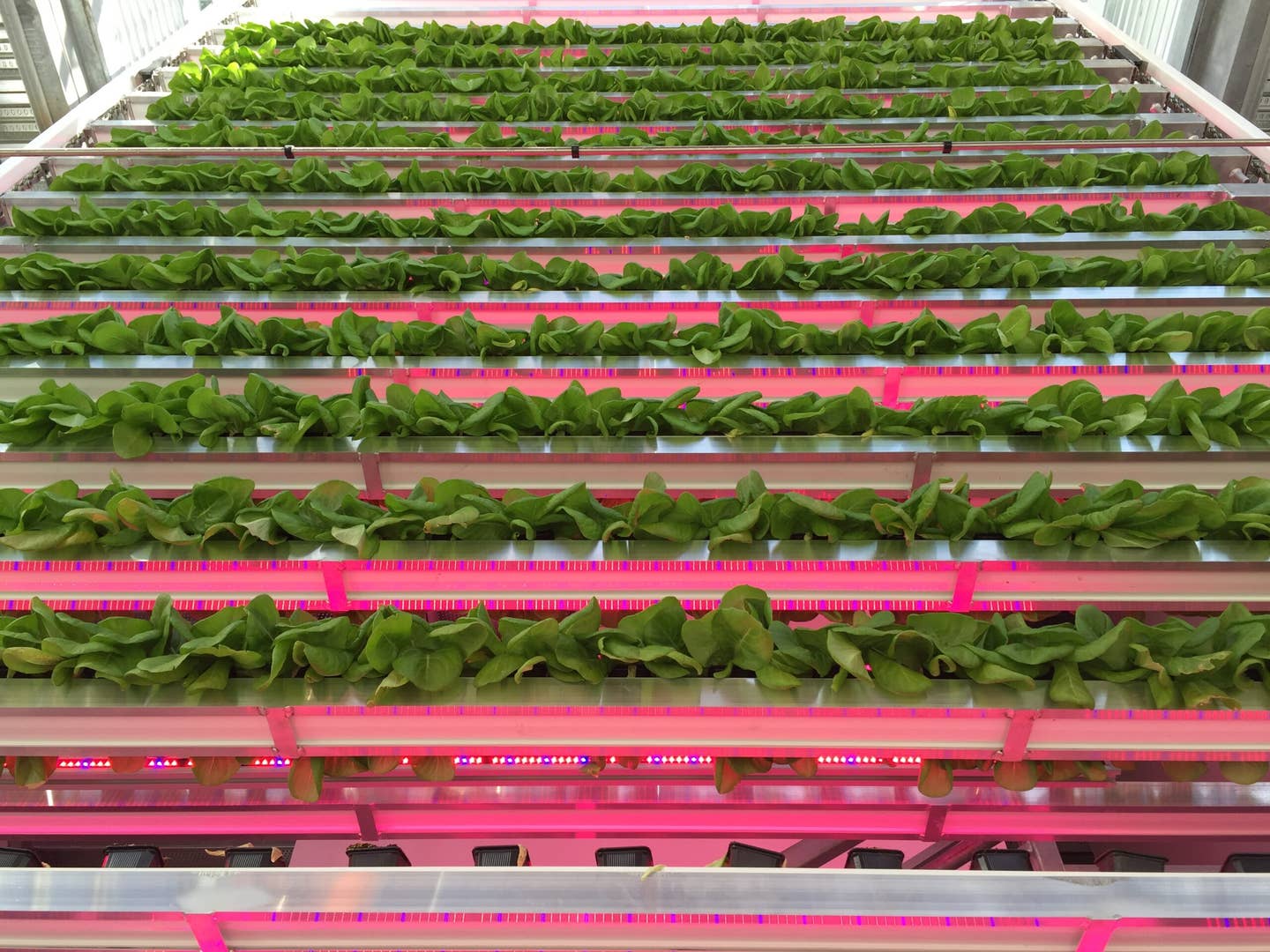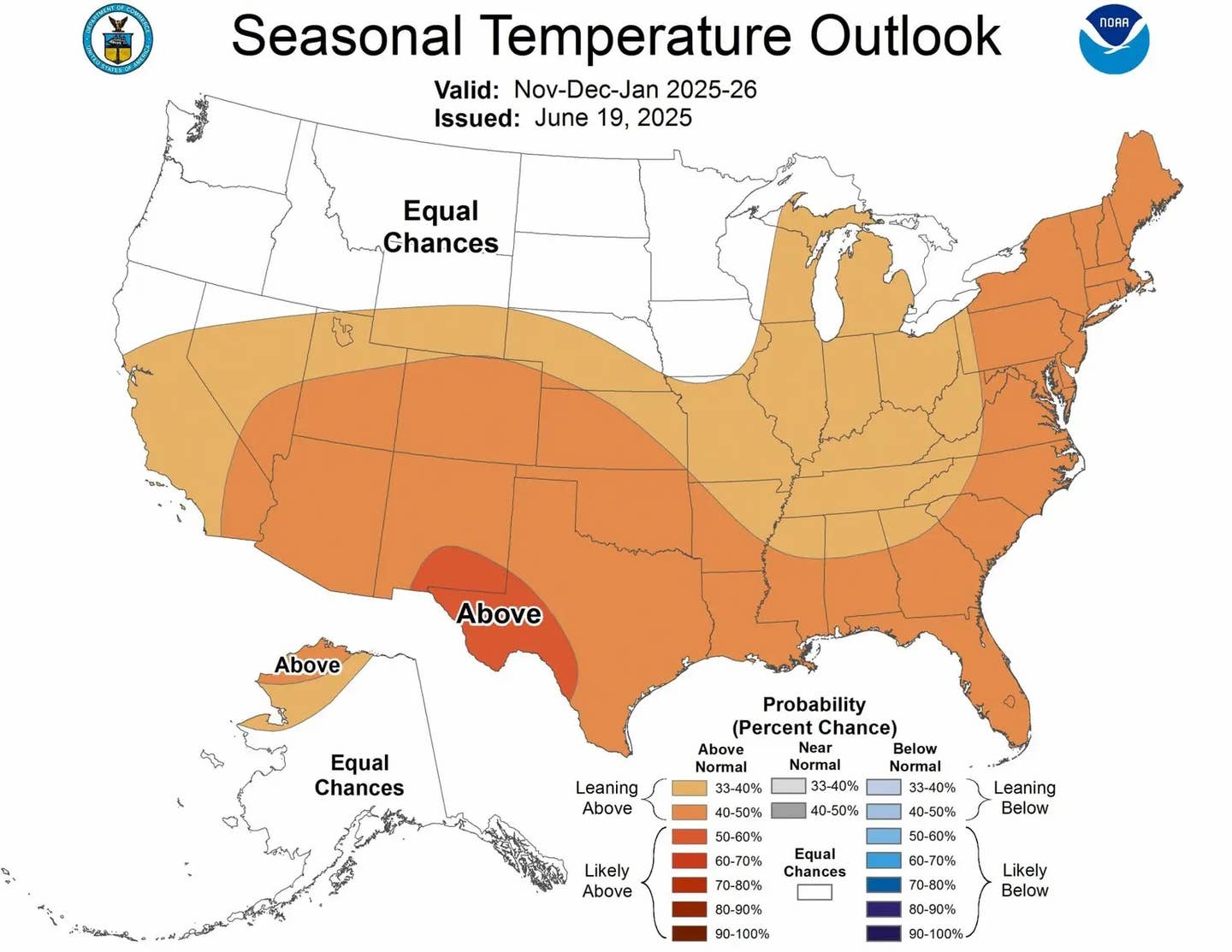Popular Stories
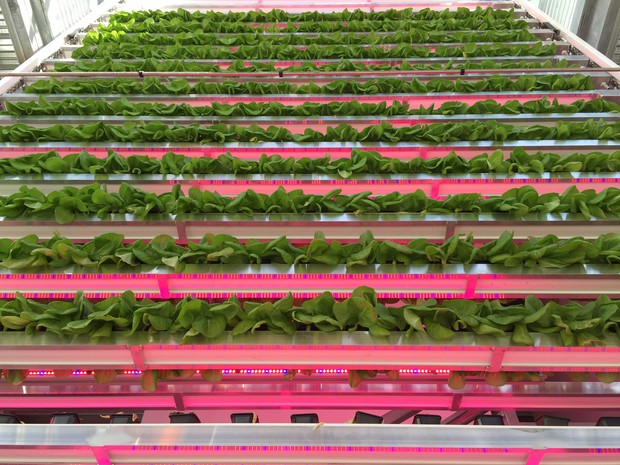
The town of Jackson is getting a green thumb this spring with the opening of a high-tech vertical greenhouse square in the middle of town unlike anything you've ever seen in a mountain town. With snow on the ground nearly 8 months a year, heirloom tomatoes, baby basil and lettuce plants that would normally need to be trucked in from California, Arizona and other more fertile parts of the world to frigid Jackson Hole no longer will need to be. By summer, Vertical Harvest will begin churning out around 100,000 pounds of fresh produce a year.
Called the ‘Disco Garden’ because of the crazy lightshow it causes at night if the blinds are unintentionally left open, Vertical Harvest used an ingenious high-tech farming method tailored towards urban areas called vertical farming, in which produce is grown hydroponically on racks that rotate throughout the three-story building to catch the outside light, which is supplemented by red and blue lumens that encourage plant growth and seem to blink on and off as the lines of lettuce leaf rise and fall on their revolving tracks.
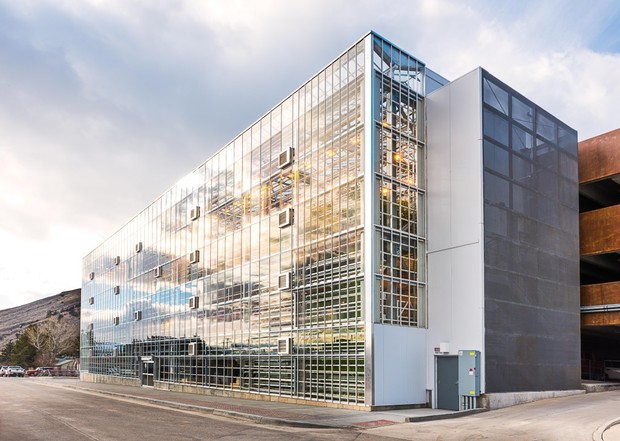 Sitting on just 1/10 of an acre on the south side of the town parking garage, Vertical Harvest will grow the equivalent produce of a 5-acre farm. Vertical Harvest photo.
Sitting on just 1/10 of an acre on the south side of the town parking garage, Vertical Harvest will grow the equivalent produce of a 5-acre farm. Vertical Harvest photo.
On just 1/10 of an acre adjacent to the town parking garage – a south-facing sliver of land previously sitting vacant – Vertical Harvest will be able to grow the equivalent amount of produce as 5 acres of traditional farmland. Thanks to the hydroponic farming method, which recirculates nutrient-rich water among the plants instead of using soil, the produce grows almost twice as fast as it would on traditional farmland while using 90% less water.
Jackson's remote, mountainous location means that most everything – including food – needs to get shipped in from places far away, and part of Vertical Harvest' impact will be to lower the carbon pollution impact of driving fresh produce into the community from as far away as Arizona, California, and Mexico. Not to mention that the food the greenhouse has grown so far – which is already featured on several local restaurants' menus – is straight-up delicious.
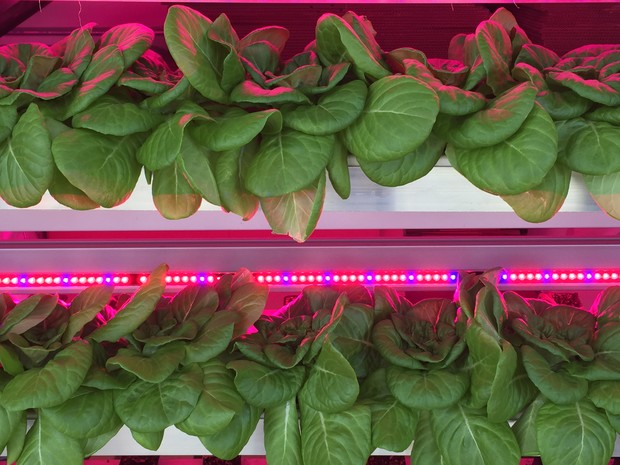
Vertical Harvest was founded by two extraordinary women: Penny McBride and Nona Yhia. The two met around 8 years ago at a party in Jackson. Ms. McBride was a consultant working on a food waste study and a commercial composting start-up, and Ms. Yehia an architect who recently designed a public rock climbing park and a private greenhouse that could withstand the harsh Wyoming winters. Aware of the demand for locally farmed produce, the two brainstormed what would soon become an amazing project.
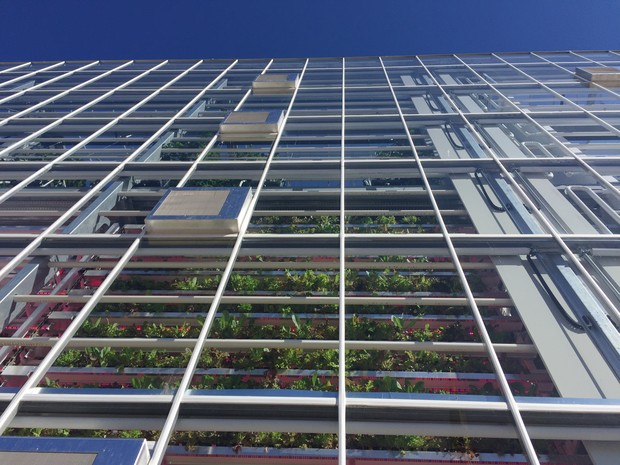
Just as recently as this past February, the farm began growing tomatoes, lettuce and herbs. By early May, Vertical Harvest’s greenhouse is expected to be fully planted and producing greens. It's already distributing them to restaurants and in a mini market located within the greenhouse, and will also sell them at local grocery stores soon.
Reducing the environmental impact of traditional agriculture
Join Our Newsletter
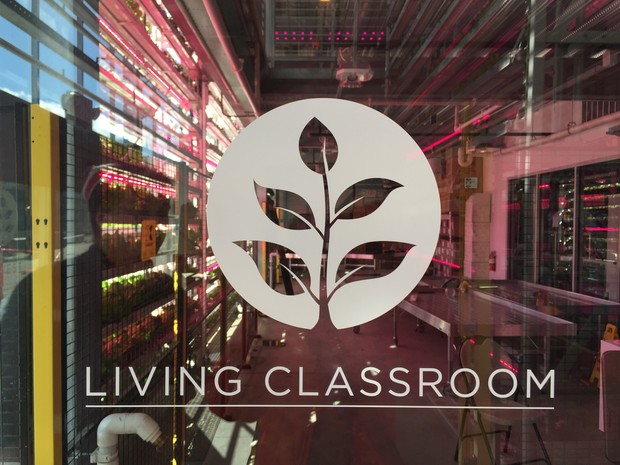
Utilizing just 1/10 of an acre to grow an annual amount of produce equivalent to 5 acres of traditional agriculture, the vertical farming model that this unique greenhouse uses is a potential solution to some of the deforestation woes that have arisen as new farmland gets planted to feed a growing worldwide population.
The agricultural sector is a large contributor to greenhouse gasses. Huge areas of land are cleared to make way for produce and cash crops that despite being plants and carbon sinks themselves, are in no way as effective at sequestering CO2, nitrous oxide and other greenhouse gasses as forests, according to the EPA.
The United States also produces four times as much food as is needed to feed the population, meaning that 75% of our food is essentially wasted. Whether it’s because it goes bad before reaching us, is thrown away, or is deemed cosmetically unacceptable, a shit ton of (usually perfectly good) food is discarded. When produce is grown locally (or any food for that matter), the need for preservatives and chemicals to ensure survival over long transportation periods disappears entirely. This results in better tasting, healthier produce.
"Patient Capital" and a New Employment Model
Unlike huge agricultural industry nestling itself abroad, causing widespread deforestation and displacement of small farmers and indigenous peoples, Vertical Harvest is directly invested in the Jackson Hole community. The company employs 15 people who have conditions such as Down syndrome, autism, seizure disorders and spina bifida; they share 140 hours of work a week under a customized employment model.
Vertical Harvest is also a public-private partnership with the town of Jackson and it uses a low-profit business model, which means its investors will see a slow, modest profit. “We’ve been calling it patient capital,” says Penny McBride, a company founder and its chief operating officer.
Check out the Vertical Harvest website to learn more!
